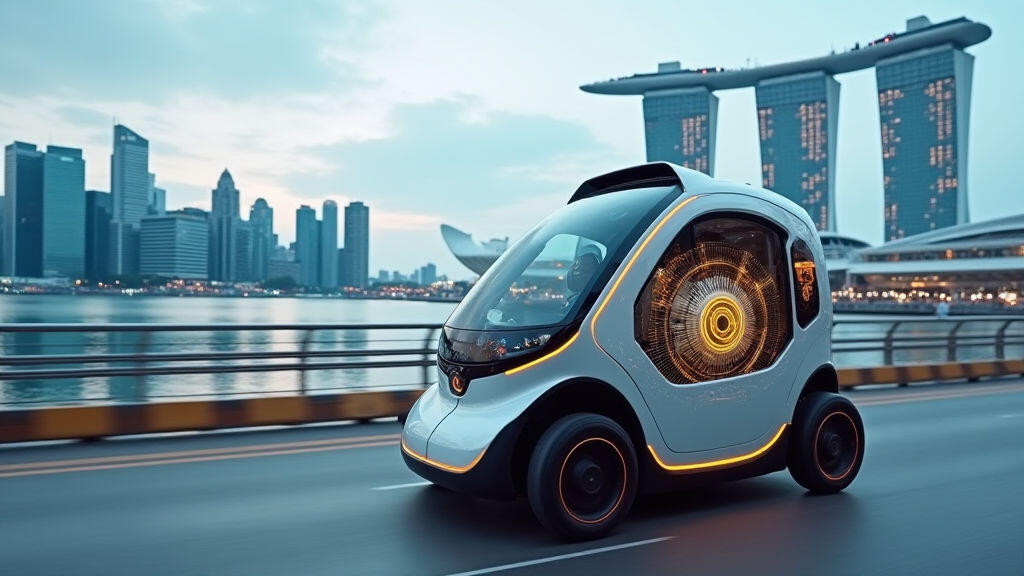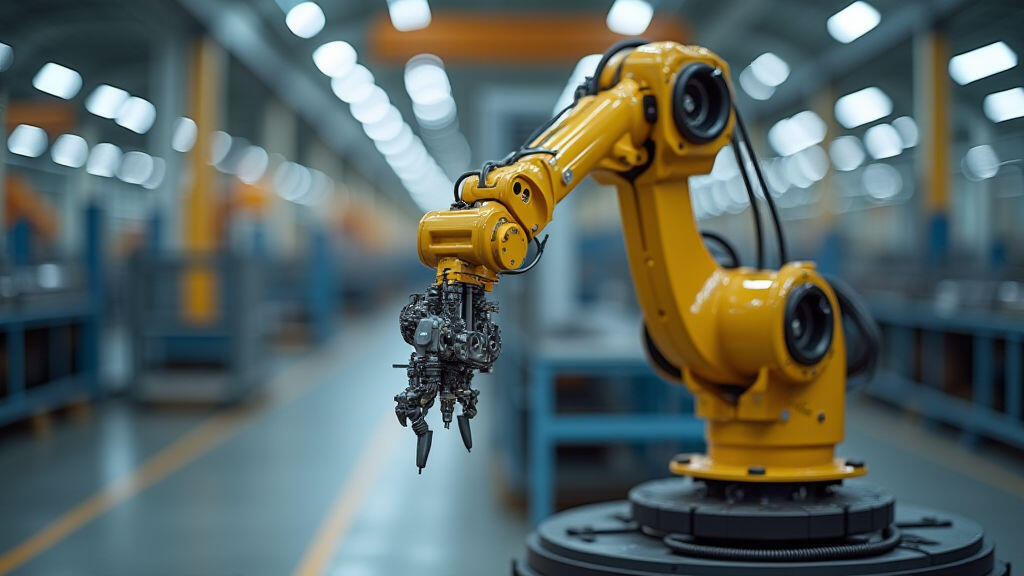Anjing Road, Xiaolan, Zhongshan, Guangdong, China
info@mes-drive.com
08.00 AM-09.00 PM

When Waymo opened its first robotaxi service in Singapore on June 12, 2025, the headlines were dominated by a single word: automation. A sleek, driverless minivan glided past Marina Bay, sparking a public debate over safety, privacy and the future of mobility. Yet beneath the gleaming glass and polished panels of that autonomous vehicle lies an often‑overlooked hero: the gear motor, also known as a reducer motor. While the buzz around self‑driving tech captures all attention, the demand for high‑performance gear motors is quietly accelerating in parallel, reshaping the automotive and robotics industries alike.

Autonomous vehicles rely on precise steering, acceleration and braking to navigate complex city streets. That precision comes from the motor’s ability to reliably translate electric current into mechanical torque. A gear motor reduces high‑speed, low‑torque motor output to the lower speed and higher torque needed at a vehicle’s wheels or steering actuators.
During Waymo’s trials, the company reported that each robotaxi used 10 high‑performance geared motors: one for each wheel, one for the steering system, and several for auxiliary functions such as retractable sensors and HVAC control. The gear motor’s “reduction ratio” allows the vehicle’s low‑power electric motor to spin a 12‑to‑1 gearbox, producing both the speed for quick acceleration and the torque required for hill climbs.
Efficiency is paramount for electric fleets operating on commercial schedules. Gear motors enable smaller, lighter main motors by providing the necessary torque multiplication. This translates to lower energy consumption and extended battery ranges—a critical factor for robotaxi companies looking to minimize downtime and operating costs.
Recent studies show that a well‑designed reducer motor can improve overall vehicle efficiency by up to 6%, according to the International Energy Agency’s 2025 mobility projections. For a fleet of 100 robotaxis, this could mean over 300 additional miles of operation per full charge.
Unlike traditional internal‑combustion engines, electric gear motors exhibit fewer moving parts that wear out quickly. However, the extreme use-cases in emerging autonomous commercial fleets—continuous operation and rapid acceleration—require motors built to high standards of reliability.
Gear motor manufacturers have responded with advanced metallurgy and smart‑sensor integrations that monitor temperature and load in real time. These safety features allow fleets to schedule predictive maintenance, reducing unexpected downtime and extending motor lifespan beyond 200,000 miles in high‑use scenarios.
The Waymo Singapore rollout exemplifies a broader trend: the rapid adoption of electric autonomous vehicles (E‑AVs) in global cities. According to McKinsey & Company, the number of autonomous vehicles on the road worldwide could reach 14 million by 2030, primarily in densely populated regions.
Each new autonomous platform requires an array of gear motors—steering, wheel hubs, and sensor housings alike. In 2024 alone, the international gear motor market grew at an estimated 8% CAGR, partially fueled by automotive electrification and the emergence of robotaxi services.
Singapore’s Ministry of Transport announced a set of mandatory safety thresholds for autonomous vehicles in 2023, including torque control limits and redundancy specifications. Manufacturers must now design gear motors that can operate within these stringent parameters, fostering a niche for high‑precision, certified gear motors.
Similarly, the European Union’s upcoming Directive on Electric Vehicle Component Standards is expected to harmonize component certification, further tightening demand for robust, standard‑compliant gear motors.
The driverless vehicle boom is just the tip of the iceberg. Smart factories, delivery drones and consumer robots also rely on gear motors to achieve precise motion control.
The logistics sector is already deploying autonomous forklifts and pallet‑stacking robots. Each robot features at least ten geared motors—enabling smooth axis transitions, load‑bearing stability, and high-precision positioning. Because these robots often operate in tight warehouse spaces, the gear motor’s torque density and compactness become essential design criteria.
Drone manufacturers face a similar conundrum: they require brushless motors that can generate high thrust while maintaining flight stability. In such applications, larger gear reductions help convert high‑speed motor outputs into the thrust‑producing rotational speeds needed for propellers, again underscoring the versatility of geared motors.

Looking ahead, the fusion of gear motors with IoT and AI is poised to transform how we think about motion. Predictive analytics can anticipate wear patterns, prompting pre‑emptive swaps and enhancing system uptime. Advances in additive manufacturing are also lowering production costs, making high‑performance gear motors accessible to smaller manufacturers and start‑ups.
Moreover, the advent of integrated motor generator units (MGUs) for regenerative braking in E‑AVs calls for gear motors that can seamlessly switch between motoring and generating modes without compromising efficiency or reliability.
While autonomous robotaxis in Singapore have captured headlines, their silent partner—the gear motor—plays a decisive role in shaping the future of urban mobility. From delivering precise torque for steering and wheel control to extending battery life through efficient reduction, the gear motor is indispensable for the era of electric, driverless vehicles and beyond. As regulations tighten, market demand surges, and technology evolves, the reducer motor will remain a cornerstone of the automation revolution, powering the world’s most ambitious mobility solutions.
Leave A Reply
Your email address will not be published. Required fiels are marked